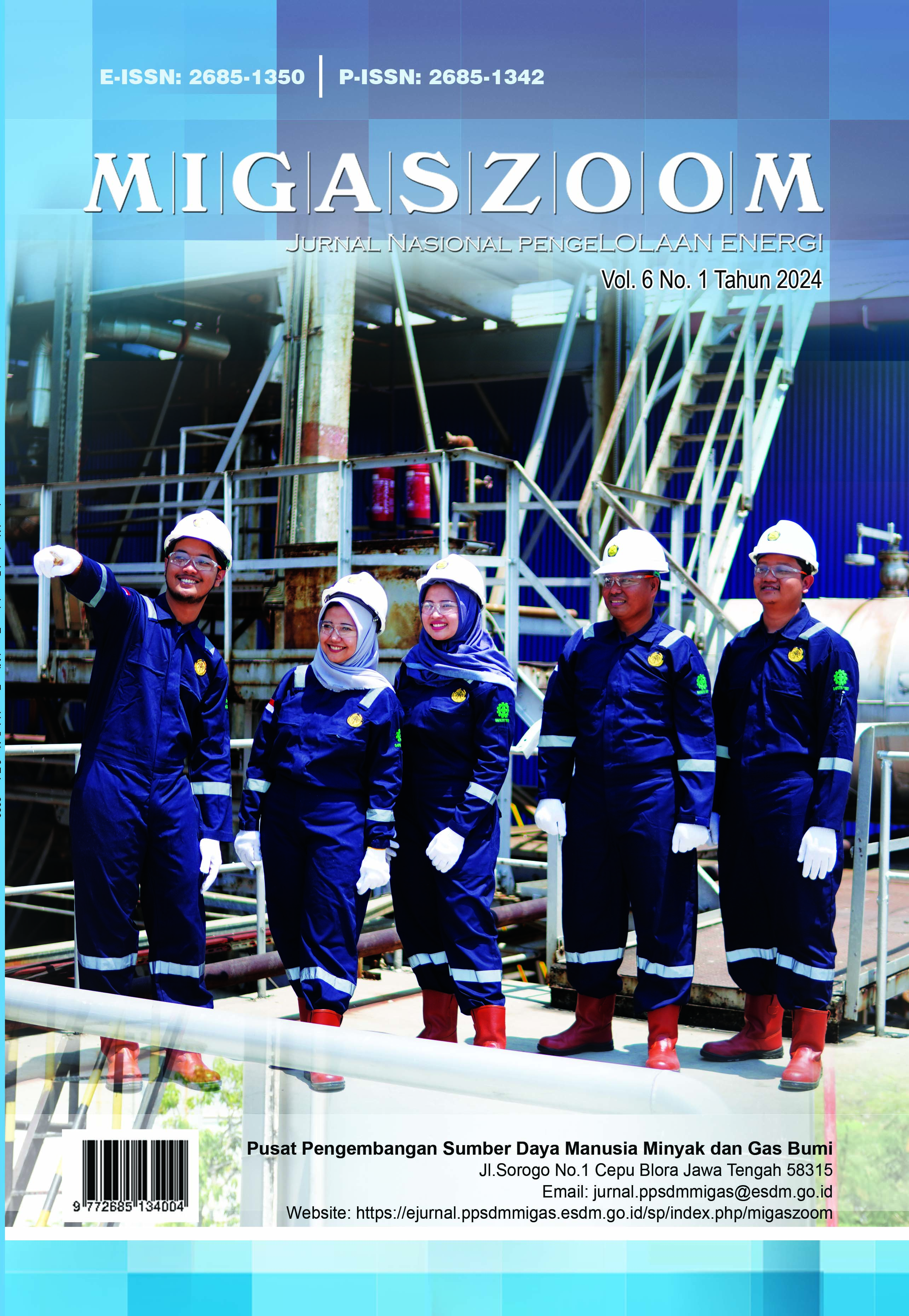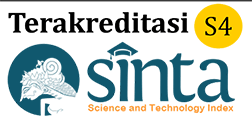Perbandingan Ketelitian GNSS dengan Metode NRTK Menggunakan Berbagai Penyedia Layanan Internet
DOI:
https://doi.org/10.37525/mz/2024-1/597Keywords:
Global Navigation Satellite System (GNSS), NRTK, Layanan Internet, Continuously Operating Reference Stations (CORS)Abstract
Penelitian ini bertujuan untuk membandingkan data pengukuran GNSS menggunakan metode NRTK menggunakan empat penyedia layanan GSM, yaitu Telkomsel, Indosat, XL dan Smartfren. Metode penelitian dilakukan dengan membandingkan data ketelitian horizontal dan vertikal, serta data posisi tiga dimensi dari enam titik pengamatan yang masing-masing diukur menggunakan setiap penyedia layanan internet. Analisis data dilakukan dengan membandingkan data ketelitian horisontal dan vertikal, posisi horizontal di sumbu easting dan northing serta data tinggi pada setiap pengukuran di setiap titik pengamatan yang menggunakan penyedia layanan internet yang berbeda. Hasil penelitian menunjukkan bahwa akurasi horisontal terbaik diberikan oleh provider XL sebesar 0.012 m dan yang terburuk adalah IM3 sebesar 0.023 m. untuk akurasi vertikal, penyedia layanan yang memberikan nilai rata-rata terbaik adalah XL sebesar 0.023 m dan yang terburuk adalah IM3 sebesar 0.037 m. Untuk ketelitian pada sumbu easting, nilai rata-rata perbedaan terbesar diberikan oleh XL yang dibandingkan dengan Smartfren yaitu sebesar 0.014 m, sementara nilai rata-rata perbedaan terkecil diberikan oleh provider IM3 yang dibandingkan dengan XL sebesar 0.008 m. Untuk sumbu northing, nilai rata-rata perbedaan terbesar diberikan oleh provider IM3 yang dibandingkan dengan XL yaitu sebesar 0.025 m. Adapun nilai rata-rata perbedaan terkecil diberikan oleh provider XL yang dibandingkan dengan Smartfren sebesar 0.005 m. Adapun untuk data tinggi, nilai rata-rata perbedaan terbesar diberikan oleh provider Telkomsel yang dibandingkan dengan Smartfren sebesar 0.050 m. Adapun nilai rata-rata perbedaan terkecil diberikan oleh provider XL yang dibandingkan dengan Smartfren.
References
Abedi, A. A., Mosavi, M. R., & Mohammadi, K. (2020). A new recursive satellite selection method for multi-constellation GNSS. Survey Review, 52(373), 330–340. https://doi.org/10.1080/00396265.2019.1574113
Alkan, R. M., Erol, S., İlçi, V., & Ozulu, M. (2020). Comparative analysis of real-time kinematic and PPP techniques in dynamic environment. Measurement: Journal of the International Measurement Confederation, 163,1–12. https://doi.org/10.1016/j.measurement.2020.107995
Alkan, R. M., Erol, S., Ozulu, I. M., & Ilci, V. (2020). Accuracy Comparison of Post-processed PPP and Real-time Absolute Positioning Techniques. Geomatics, Natural Hazards and Risk, 11(1), 178–190. https://doi.org/10.1080/19475705.2020.1714752
Correa-Muños, N. A., & Cerón-Calderón, L. A. (2018). Precision and accuracy of the static GNSS method for surveying networks used in civil engineering. Ingenieria e Investigacion, 38(1), 52–59. https://doi.org/10.15446/ing.investig.v38n1.64543
Dabove, P. (2019). The usability of GNSS mass-market receivers for cadastral surveys considering RTK and NRTK techniques. Geodesy and Geodynamics, 10(4), 282–289. https://doi.org/10.1016/j.geog.2019.04.006
Edwinanto. (2020). Strategi Implementasi 4G / LTE Pada Jaringan Operator Selular PT . Telkomsel Indonesia. Informatika Dan Teknologi Komunikasi, 1(1), 1–15.
Erol, S., Alkan, R. M., Ozulu, M., & Ilçi, V. (2020). Impact of different sampling rates on precise point positioning performance using online processing service. Geo-Spatial Information Science, 24(2), 302–312. https://doi.org/10.1080/10095020.2020.1842811
Erol, S., Alkan, R. M., Ozulu, M., & İlçi, V. (2020). Performance analysis of real-time and post-mission kinematic precise point positioning in marine environments. Geodesy and Geodynamics, 11(6), 401–410. https://doi.org/10.1016/j.geog.2020.09.002
Hamidi, M., & Javadi, P. (2017). The Analysis of Scientific and Commercial Softwares Accuracy in GPS Observation Processing. Open Journal of Geology, 07(03), 267–278. https://doi.org/10.4236/ojg.2017.73019
Luo, X., Schaufler, S., Branzanti, M., & Chen, J. (2020). Assessing the benefits of Galileo to high-precision GNSS positioning – RTK, PPP and post-processing. Advances in Space Research, xxxx. https://doi.org/10.1016/j.asr.2020.08.022
Pepe, M. (2018). Cors architecture and evaluation of positioning by low-cost GNSS receiver. Geodesy and Cartography, 44(2), 36–44. https://doi.org/10.3846/gac.2018.1255
Pepe, M., & Costantino, D. (2022). Measurement in Network-RTK for the Survey And Representation of A Quarry: Potentials And Limits. International Journal of Engineering Trends and Technology, 70(1), 233–239. https://doi.org/10.14445/22315381/IJETT-V70I1P228
Ramadhon, S. (2015). Analisis Pengaruh Total Electron Content (TEC) Di Lapisan Ionosfer Pada Data Pengamatan GNSS RT-PPP. Swara Patra, 5(1), 29–30.
Ramadhon, S. (2020). Pengaruh Lingkungan Pengamatan pada Ketelitian Horisontal GNSS dengan Metode RTK-NTRIP. Jurnal Nasional Pengelolaan Energi MigasZoom, 2(1), 27–35. https://doi.org/10.37525/mz/2020-1/249
Ramadhon, S., Miko, W. W., & Nugraha, G. (2020). Perbandingan Ketelitian Posisi Tiga Dimensi dari Perangkat Lunak Pengolahan Data GNSS Komersial. JGISE: Journal of Geospatial Information Science and Engineering, 3(2), 106. https://doi.org/10.22146/jgise.58768
Ramadhon, S., Tryono, F. Y., Fauzi, I., & Pramudita, G. N. (2022). Perbandingan Ketelitian GNSS dengan Metode NRTK, Real-Time PPP dan Post-Processed PPP. JGISE: Journal of Geospatial Information Science and Engineering, 5(2), 1. https://doi.org/10.22146/jgise.73558
Downloads
Published
How to Cite
Issue
Section
License
Copyright (c) 2024 Syafril Ramadhon

This work is licensed under a Creative Commons Attribution-NonCommercial-ShareAlike 4.0 International License.
Use, distribution, and adaptation of this work are permitted for non-commercial purposes, under the following conditions:
- Proper attribution must be given to the original author and source (journal), including citation of the title, author name(s), and link to the original version.
- Modifications or adaptations must be released under the same license.
- Commercial use, including republication for financial gain, is not allowed without written permission from the copyright holder.










